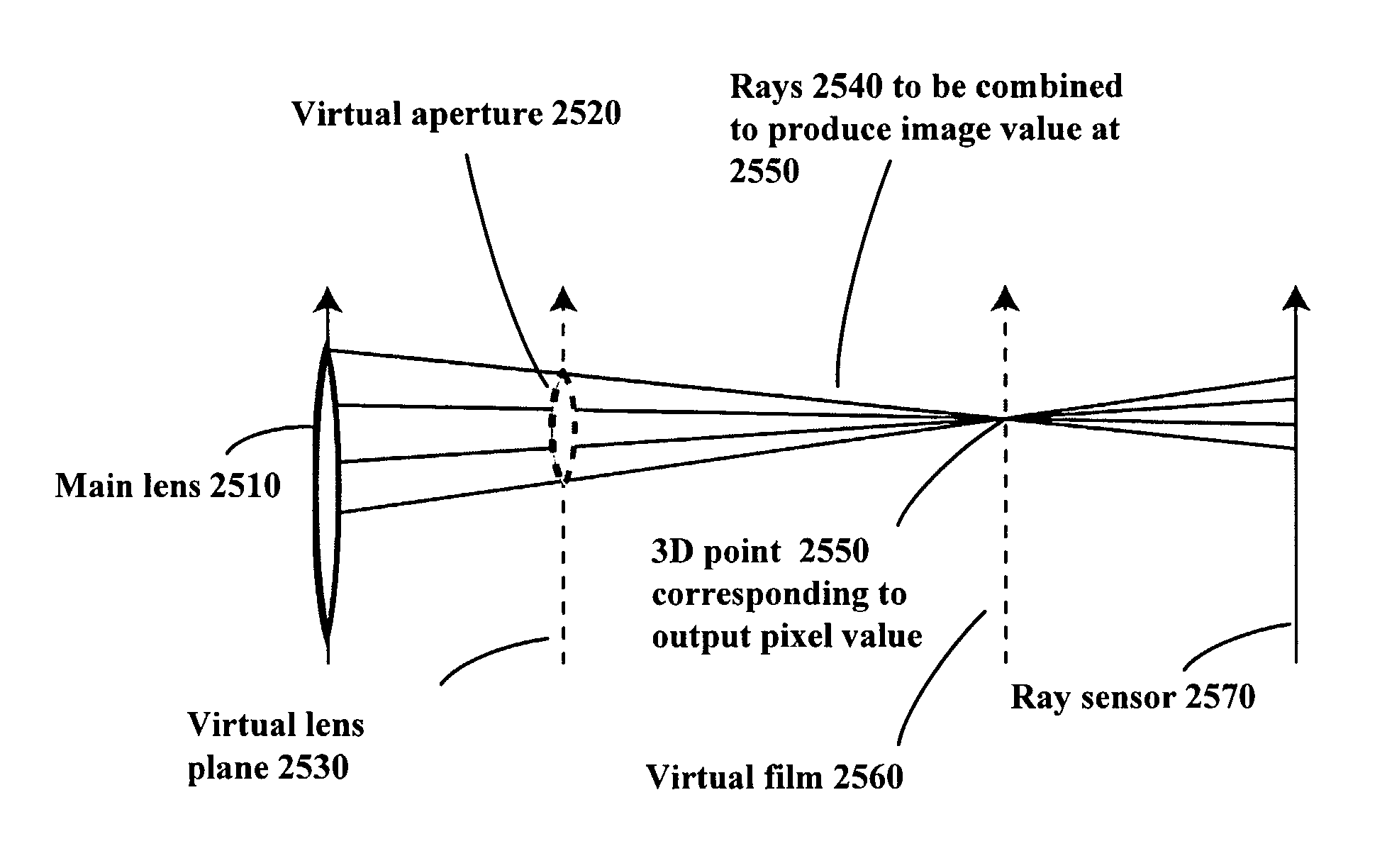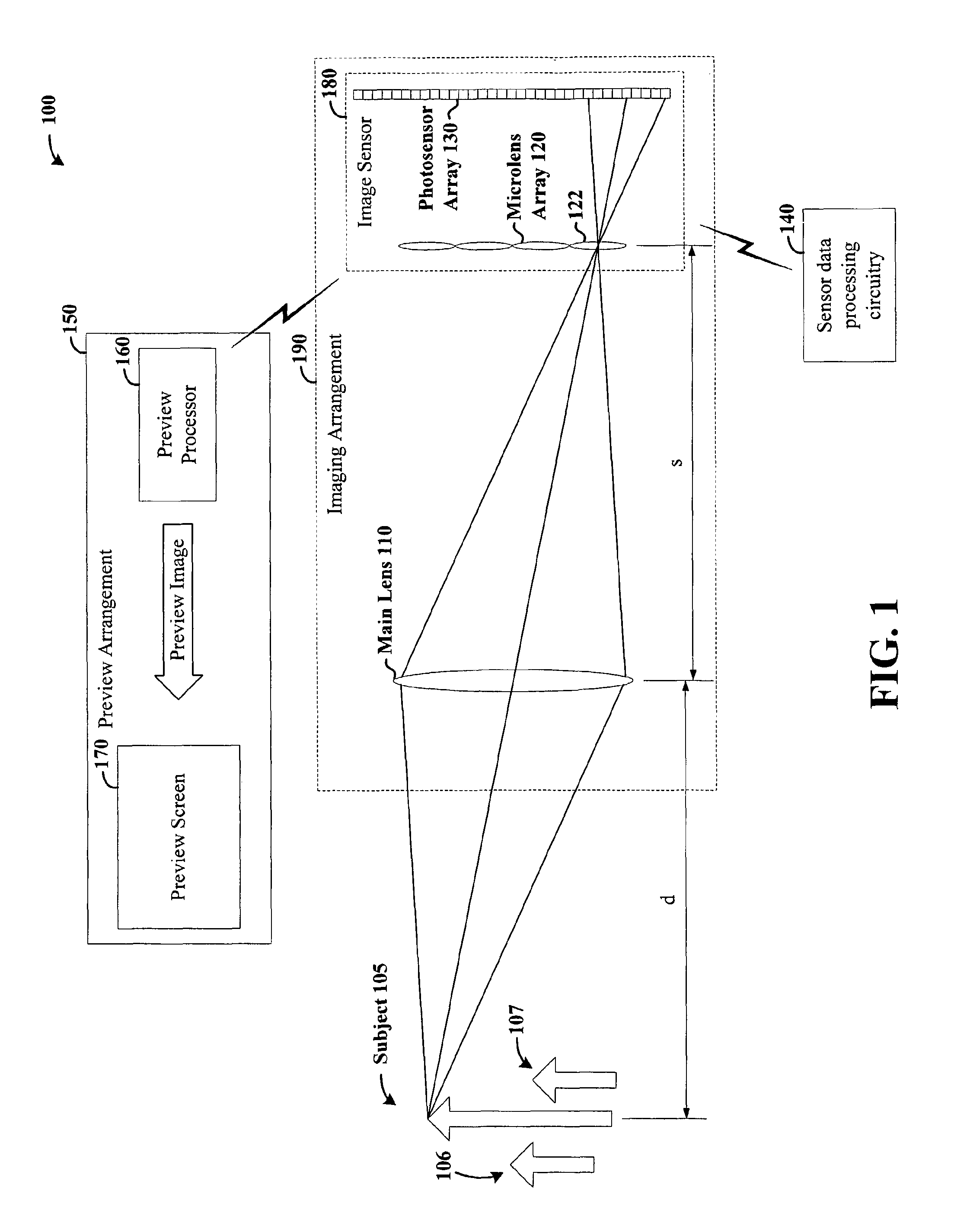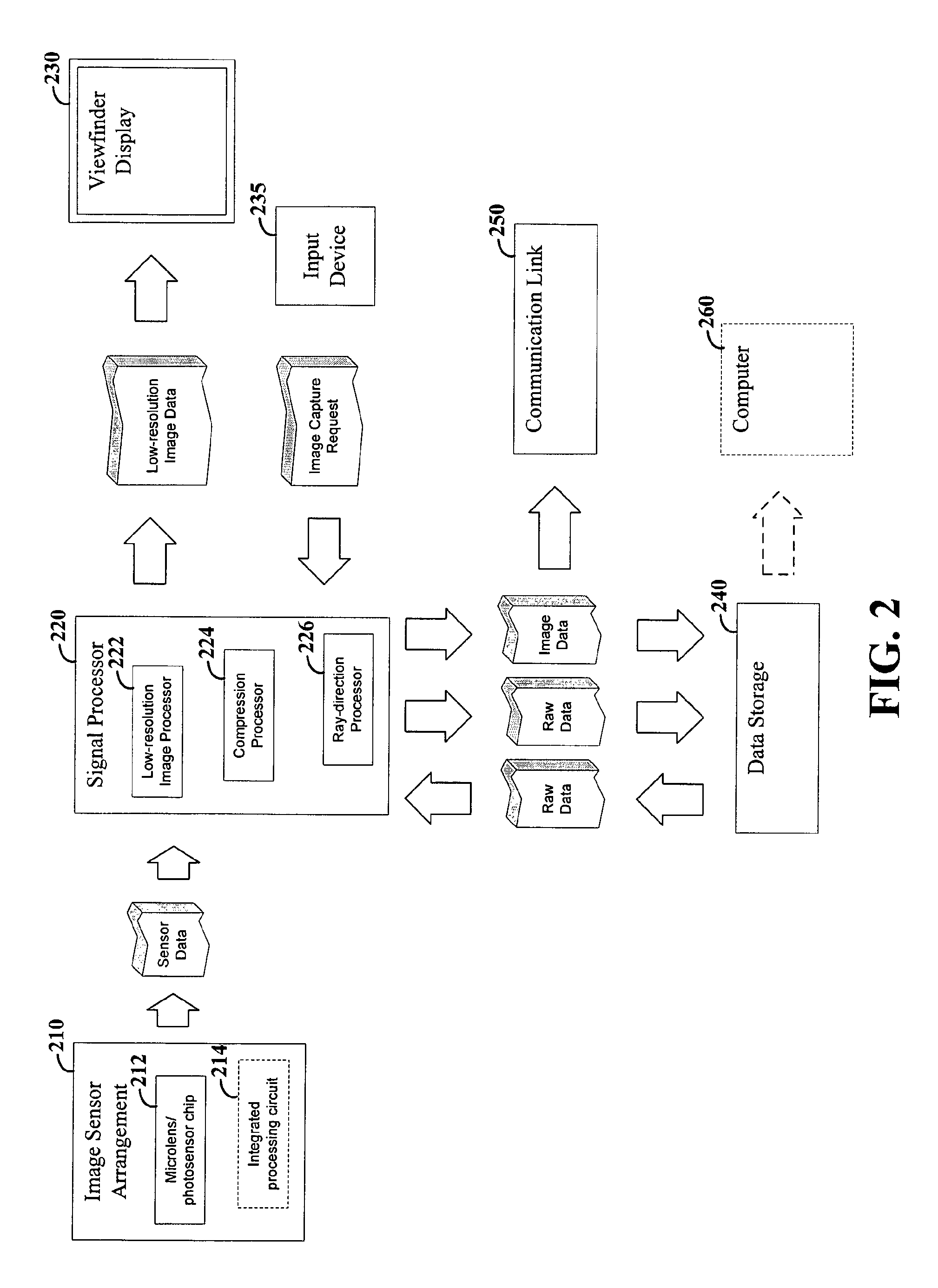Imaging arrangements and methods therefor
a technology of imaging and arrangement, applied in the field of imaging applications, can solve the problems of limiting the amount of light collected in imaging applications such as those involving cameras, video cameras, microscopes, telescopes, etc., and most imaging devices and conventional cameras such as digital still cameras and video cameras do not record most of the information abou
- Summary
- Abstract
- Description
- Claims
- Application Information
AI Technical Summary
Problems solved by technology
Method used
Image
Examples
Embodiment Construction
The present invention is believed to be useful for a variety of different types of devices, and the invention has been found to be particularly suited for electronic imaging devices and applications. While the present invention is not necessarily limited to such applications, various aspects of the invention may be appreciated through a discussion of various examples using this context.
According to an example embodiment of the present invention, a four-dimensional (4D) light field (e.g., the light traveling along each ray in a region such as free space) is detected using an approach involving the determination of the amount and direction of light arriving at a sensor located at a focal plane. The two-dimensional position of light in the focal plane is detected, together with information characterizing the direction from which the light arrived at particular locations in the plane. With this approach, the directional lighting distribution arriving at different locations on the sensor...
PUM
 Login to View More
Login to View More Abstract
Description
Claims
Application Information
 Login to View More
Login to View More - R&D
- Intellectual Property
- Life Sciences
- Materials
- Tech Scout
- Unparalleled Data Quality
- Higher Quality Content
- 60% Fewer Hallucinations
Browse by: Latest US Patents, China's latest patents, Technical Efficacy Thesaurus, Application Domain, Technology Topic, Popular Technical Reports.
© 2025 PatSnap. All rights reserved.Legal|Privacy policy|Modern Slavery Act Transparency Statement|Sitemap|About US| Contact US: help@patsnap.com



